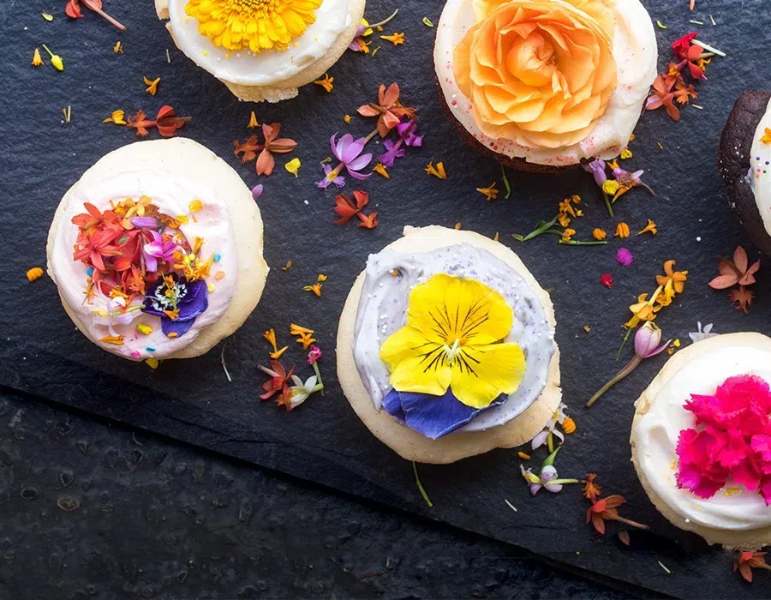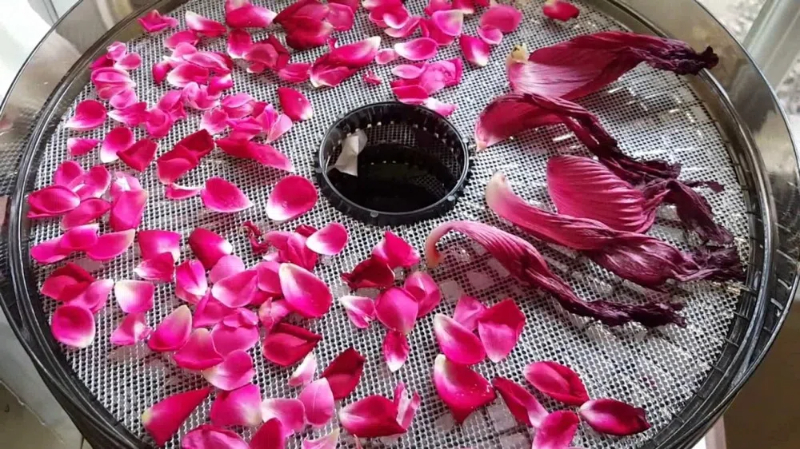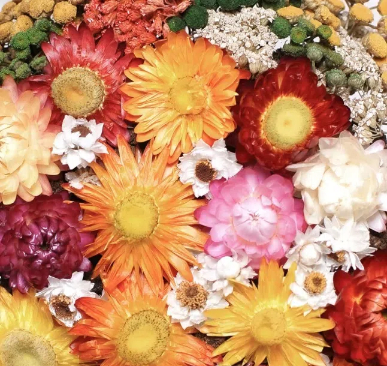
Content Menu
● Understanding Food Dehydrators
● Benefits of Using a Food Dehydrator
● Choosing the Right Flowers
● Step-by-Step Guide to Drying Flowers
>> Step 1: Gather Your Materials
>> Step 2: Prepare the Flowers
>> Step 3: Arrange Flowers on Trays
>> Step 4: Set the Dehydrator
>> Step 5: Monitor Progress
>> Step 6: Store Dried Flowers
● Creative Uses for Dried Flowers
● Additional Drying Techniques
>> Air Drying
>> Silica Gel Method
● Maintaining Colors and Shapes
● Conclusion
● FAQs
>> 1. What types of flowers are best for drying in a dehydrator?
>> 2. How long does it take to dry flowers in a dehydrator?
>> 3. Can I dry leaves or herbs using a food dehydrator?
>> 4. How should I store my dried flowers after drying?
>> 5. Can I use essential oils with my dried flower arrangements?
● Citations:
Drying flowers is an art that allows you to preserve their beauty and fragrance for long periods. Using a food dehydrator is one of the most efficient and effective methods for drying flowers, as it helps maintain their color, shape, and texture. In this article, we will explore the step-by-step process of drying flowers in a food dehydrator, the best practices to ensure optimal results, and some creative uses for your dried flowers.

Understanding Food Dehydrators
A food dehydrator is a kitchen appliance that removes moisture from food items through a combination of heat and airflow. It typically consists of several trays stacked on top of each other, where food or flowers can be placed for drying. The dehydrator works by circulating warm air around the items, allowing moisture to evaporate quickly and evenly. This method is particularly advantageous for drying flowers because it minimizes the risk of browning or wilting that can occur with other drying methods.
Benefits of Using a Food Dehydrator
- Efficiency: Dehydrators dry flowers faster than air-drying methods, often taking just a few hours.
- Color Retention: The controlled environment helps preserve the vibrant colors of the flowers.
- Shape Preservation: Unlike pressing or air-drying, using a dehydrator maintains the natural shape and texture of the blooms.
- Batch Drying: You can dry multiple flowers at once, making it suitable for larger projects.
Choosing the Right Flowers
Not all flowers are suitable for drying in a dehydrator. Here are some popular choices:
- Roses: Classic and fragrant, roses retain their beauty when dried.
- Lavender: Known for its lovely scent, lavender dries well and can be used in sachets.
- Zinnias: These colorful blooms maintain their hues and shapes beautifully.
- Marigolds: Bright and cheerful, marigolds are excellent for both decoration and culinary uses.
- Baby's Breath: This delicate flower adds texture to arrangements.
Avoid flowers with high water content like lilies or tulips, as they may not dry effectively.
Step-by-Step Guide to Drying Flowers
Step 1: Gather Your Materials
You will need:
- A food dehydrator
- Freshly cut flowers
- Scissors
- A clean workspace
Step 2: Prepare the Flowers
1. Select Fresh Blooms: Choose flowers that are fully open but not wilting. This ensures even drying.
2. Trim Stems: Cut the stems short, ideally about 1 inch long. Remove any leaves as they can trap moisture.
3. Inspect for Pests: Check your flowers for insects or dirt. Rinse them gently under cool water if necessary and let them dry completely.
Step 3: Arrange Flowers on Trays
1. Single Layer Placement: Place the flower heads on the dehydrator trays in a single layer without overlapping them. This allows for proper airflow.
2. Consider Size and Weight: Position larger or heavier flowers closer to the fan if your dehydrator has one to ensure they dry evenly.
Step 4: Set the Dehydrator
1. Temperature Setting: Set your dehydrator to a low temperature (around 95°F or 35°C) to prevent heat damage to delicate petals.
2. Drying Time: Most flowers will take between 4 to 12 hours to dry completely, depending on their size and moisture content. Check periodically to avoid over-drying.
Step 5: Monitor Progress
Every couple of hours, check on your flowers:
- Gently touch them to see if they feel dry.
- Rotate trays if necessary to ensure even drying.
Step 6: Store Dried Flowers
Once dried, allow your flowers to cool before handling them further. Store them in airtight containers away from direct sunlight to preserve their color and fragrance.

Creative Uses for Dried Flowers
Dried flowers can be used in various creative ways:
- Decorative Arrangements: Create beautiful bouquets or centerpieces for home decor.
- Potpourri: Combine dried petals with essential oils for fragrant potpourri.
- Craft Projects: Use dried flowers in scrapbooking, card making, or as embellishments for gifts.
- Sachets: Fill small fabric bags with dried lavender or rose petals for scented sachets.
- Baking Decoration: Edible dried flowers can be used as cake decorations or in culinary dishes.
Additional Drying Techniques
While using a food dehydrator is highly effective, there are additional methods you might explore depending on your preferences:
Air Drying
Air drying involves hanging flower bunches upside down in a cool, dark place with good ventilation. This method takes longer (usually several weeks) but can be rewarding as it allows you to create beautiful arrangements directly from nature without any equipment.
Silica Gel Method
Using silica gel is another effective way to dry delicate blooms while preserving their shape and color:
1. Fill a container with silica gel.
2. Trim flower stems and place them upright in the gel.
3. Cover the blooms with more silica gel until fully submerged.
4. Seal the container and let it sit for several days until completely dry.
Maintaining Colors and Shapes
To maintain the vibrant colors and shapes of your dried flowers, it's crucial to handle them with care. Here are some essential tips:
- Use fresh blooms at their peak.
- Avoid exposure to direct sunlight during drying.
- Store dried flowers in dark containers to prevent fading over time.
- Consider sealing dried flowers with hairspray or Mod Podge to protect them from moisture and dust.
Conclusion
Drying flowers in a food dehydrator is an efficient way to preserve their beauty while maintaining their color and shape. By following these simple steps and tips outlined above, you can create stunning dried flower arrangements that last long after the blooms have faded. Whether you use them for decoration, crafts, or culinary purposes, dried flowers offer endless possibilities.

FAQs
1. What types of flowers are best for drying in a dehydrator?
Flowers such as roses, lavender, zinnias, marigolds, and baby's breath are excellent choices due to their ability to retain shape and color when dried.
2. How long does it take to dry flowers in a dehydrator?
Typically, it takes between 4 to 12 hours depending on the type of flower and its moisture content.
3. Can I dry leaves or herbs using a food dehydrator?
Yes! Many herbs like basil or mint can also be dried using a food dehydrator with similar methods.
4. How should I store my dried flowers after drying?
Store dried flowers in airtight containers away from direct sunlight to maintain their color and fragrance.
5. Can I use essential oils with my dried flower arrangements?
Absolutely! Adding essential oils can enhance the fragrance of potpourri made from dried flowers.
Citations:
[1] https://www.aimheatpump.com/a-news-how-to-dry-flowers-in-a-food-dehydrator
[2] https://www.floraly.com.au/blogs/news/how-to-dry-flowers-quickly-on-a-time-budget
[3] https://www.growcreatesip.com/blog/dehydrating-flowers-fruits-botanicals-for-diy-herbal-tea
[4] https://www.littleyellowwheelbarrow.com/how-to-dry-flowers/
[5] https://www.thefarmerscupboard.com/blogs/prepare-preserve/how-to-dry-flowers-out
[6] https://www.floretflowers.com/discovering-dried-flowers/
[7] https://fleurigros.ca/en/blog/12-techniques-infaillibles-pour-secher-vos-fleurs-et-vegetaux-et-creer-des-decorations-durables
[8] https://excaliburdehydratorsaustralia.com/blogs/avalon/don-t-hurry-don-t-worry-and-be-sure-to-smell-the-flowers-along-the-way
[9] https://www.commercialdehydrators.co.uk/dehydrating-recipes/dehydrated-flowers
[10] https://www.dehydratorsamerica.com/dehydrating-recipes/dehydrated-flowers











